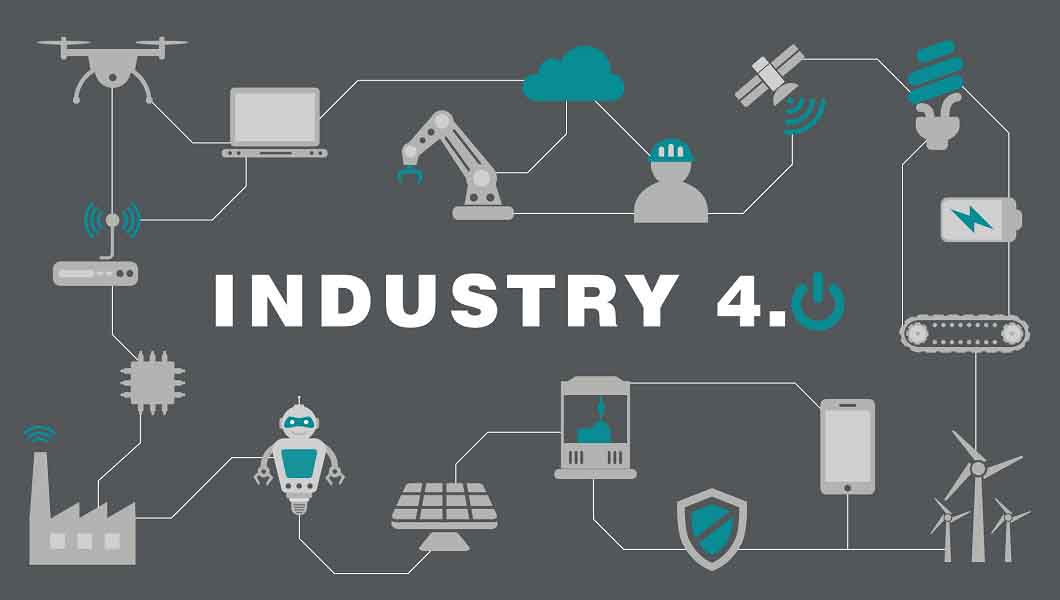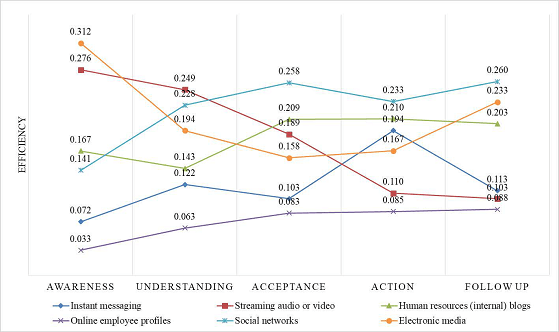
How ‘Industry 4.0’ will change internal communications
What is Industry 4.0 and how will it change the effectiveness of internal communications? We explore how a recent study sheds some light on the subject.
The first industrial revolution of the 18th century was one of mechanisation. Coal was mined and the steam engine was invented. The second was towards the end of the 19th century and focused on fuel, developing the uses of electricity, gas and oil, which led to the invention of the internal combustion engine. The third came in around 1969 and was one of information. Electronics, telecommunications and computers.
The fourth industrial revolution is happening now. Known as Industry 4.0, it is the result of when new collaborative technologies help change businesses, and where real-time data meets interactive experiences.
In a recent study, research revealed a gap between industry 4.0 and what internal communications needs to do to succeed among the change, the data and the new business world that is emerging.
Top-down, bottom-up, and sideways
Internal communications is a key part of how a business runs. As organisations get larger, transferring the understanding, skills and knowledge throughout the team becomes more difficult. However, for as long as I’ve been in the industry (going on 11 years now) the top-down dissemination of information has been old hat. The goal has always been communication: a two-way conversation. The focus flipped to bottom-up communications, where colleague-voice was first and foremost, and their stories – and not those of senior leadership – were prioritised.
More recently, as part of Industry 4.0, internal communications has become more horizontal. With the introduction of digital tools such as Slack, Teams, and Skype – colleagues would talk to each other and share messages of what was going on, what they felt – neither being driven by, or heard by, those running the business.
There are pros and cons to this way of working – depending on the culture of the business. In some regards, this horizontal way of communicating cuts out hierarchical decision making, and makes people more productive, more time-effective and reduces the risk of failure or delays. On the flip side, where leadership is required, it can lead to anxiety and insecurity about who is really in charge when colleagues reach an impasse, and a silo approach to delivering individual interpretations of the overall business strategy.
How can internal communications adapt for Industry 4.0?
In the recent research, it was suggested that different communication channels have different levels of effectiveness for what the business needs at that particular time.
For example, one-way channels like email and even letters are most effective when final decisions have been made, and the details and outcomes of those decisions need to be made clear.
Two-way channels, however, are more important at the early stages of decision making, where input from different stakeholders and colleagues are helpful in collecting knowledge, participation and acceptance about the decisions that need to be made in future.
Here is the map of how effective a channel is during the business change cycle of Awareness, Understanding, Acceptance, Action and Follow-up, as defined by Linke and Zerfass (2011).

Digital Communication Channels in Industry 4.0 Implementation: The Role of Internal Communication
Kovaitė, Šūmakaris, Stankevičienė (2020)
So, what do you think? Are the technological opportunities and availability of tools, apps, software, Teams, Zoom and virtual coffees changing the way internal communications is working? Has the last few months proved that digital communication is no-longer a nice to have, but a cornerstone of the work we do and how we do it? I think all of us have seen that this is the case.
The study this blog is based on is well worth a read, and can be found here. Digital Communication Channels in Industry 4.0 Implementation: The Role of Internal Communication
Get in touch and let us know what you think on our social media channels, as well as in the comments below.



